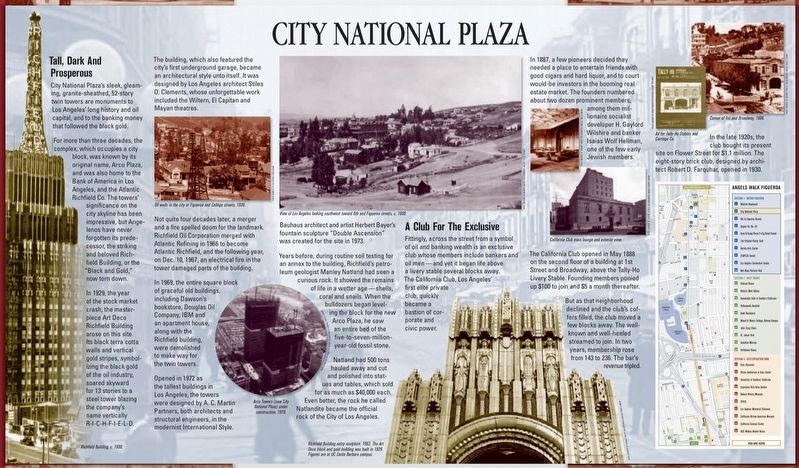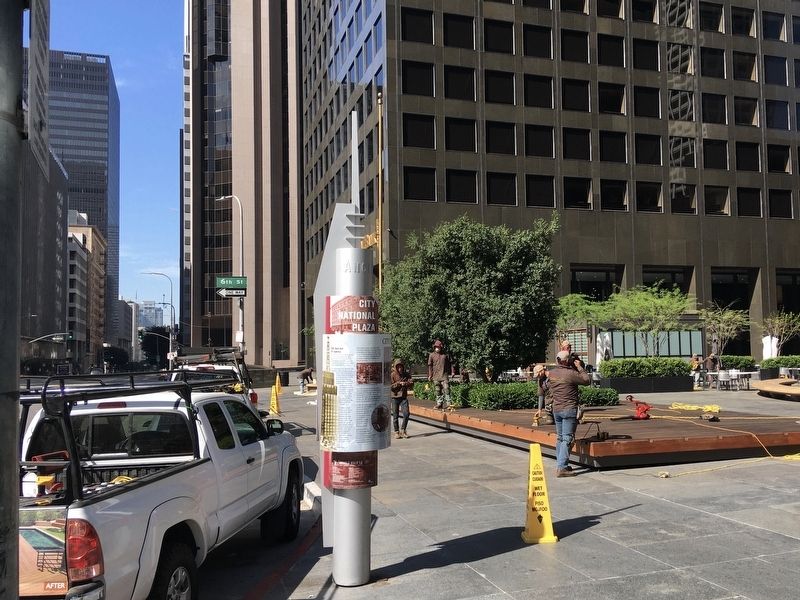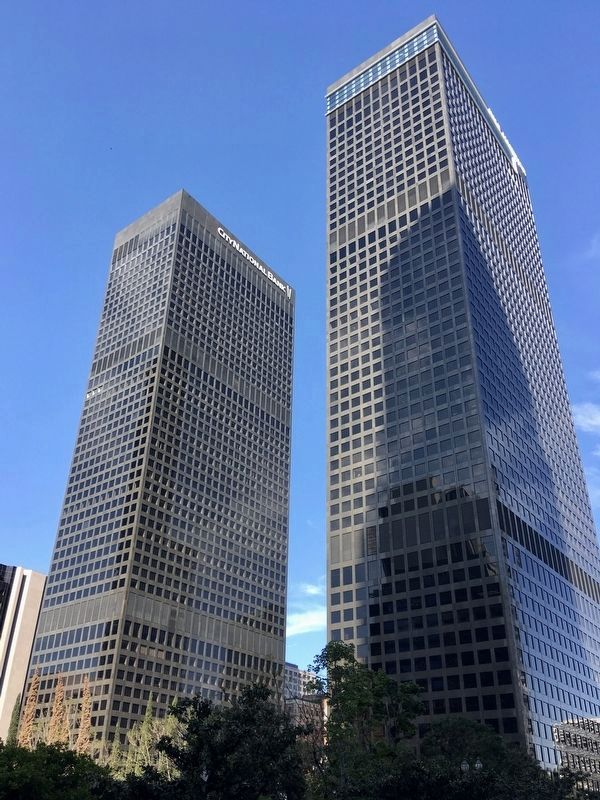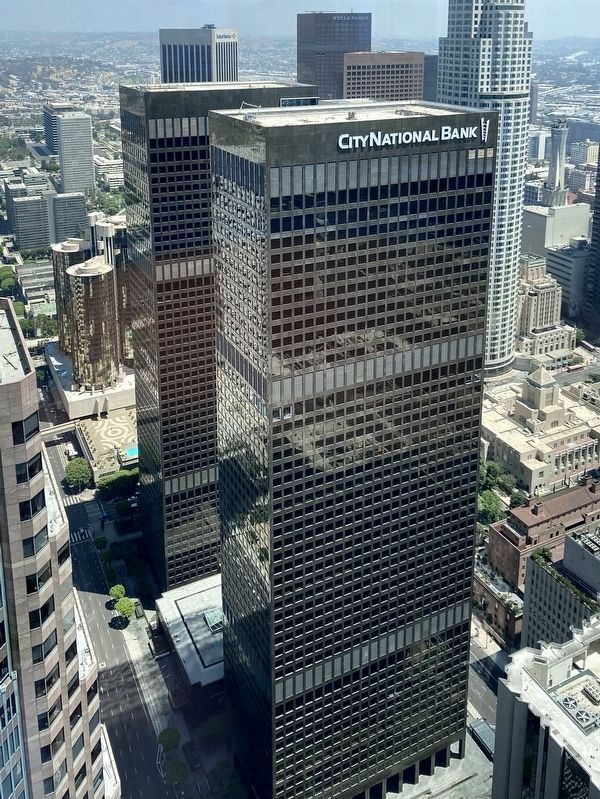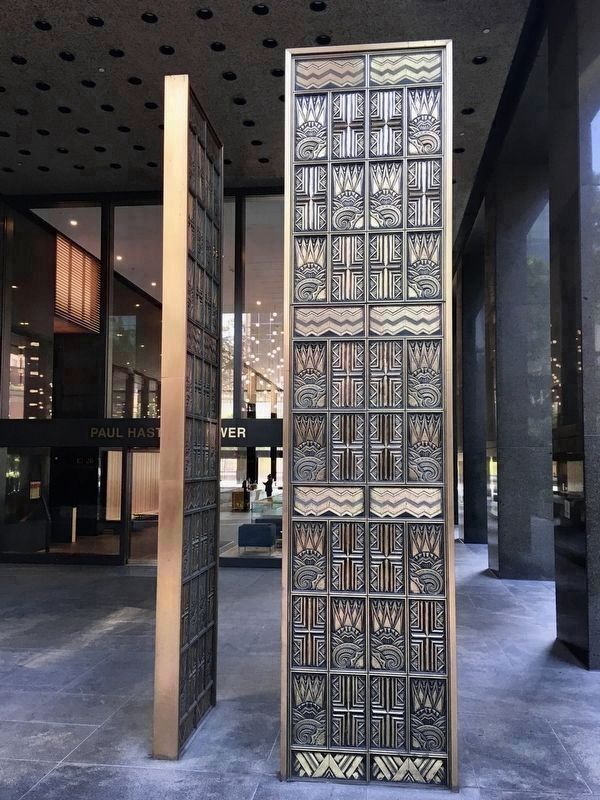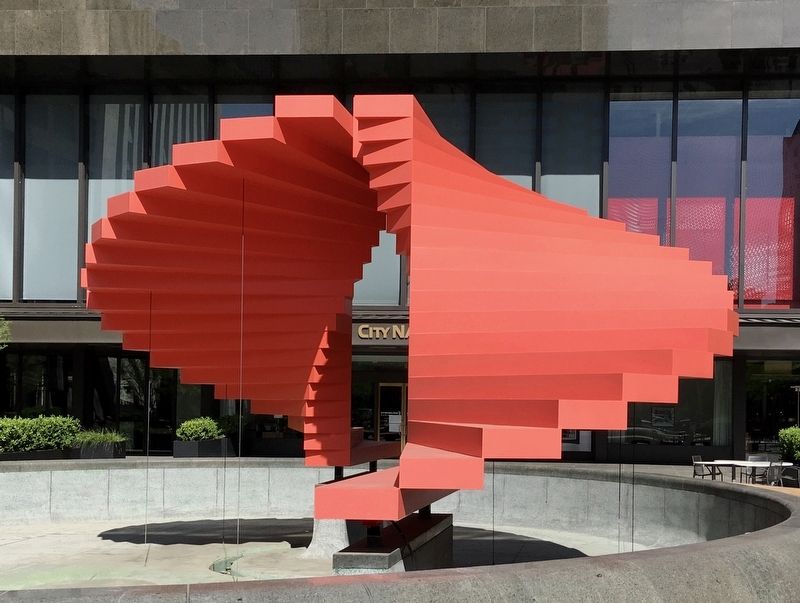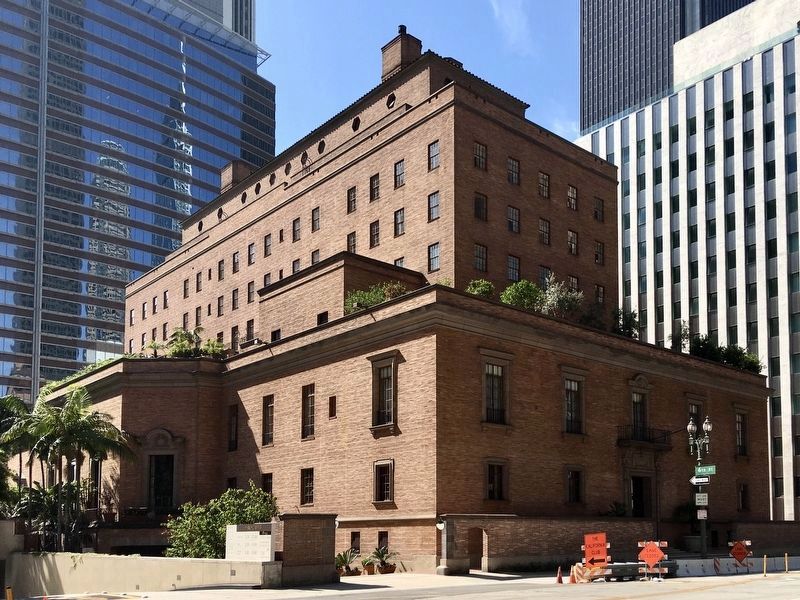Downtown Los Angeles in Los Angeles County, California — The American West (Pacific Coastal)
City National Plaza
Arco Towers
Tall, Dark And Prosperous
City National Plaza’s sleek, gleaming, granite-sheathed, 52-story twin towers are monuments to Los Angeles’ long history and oil capital, and to the banking money that followed the black gold.
For more than three decades, the complex, which occupies a city block, was known by its original name, Arco Plaza, and was also home to the Bank of America in Los Angeles, and the Atlantic Richfield Co. The towers’ significance on the city skyline has been impressive, but Angelenos have never forgotten its predecessor, the striking and beloved Richfield Building, or the “Black and Gold,” now torn down.
In 1929, the year of the stock market crash, the masterpiece Art Deco Richfield Building arose on this site. Its black terra cotta walls and vertical gold stripes, symbolizing the black gold of the oil industry, soared skyward for 13 stories to a steel tower blazing the company’s name vertically R-I-C-H-F-I-E-L-D.
The building, which also featured the city’s first underground garage, became an architectural style unto itself. It was designed by Los Angeles architect Stiles O. Clements, whose unforgettable work included the Wiltern, El Capitan and Mayan theatres.
Not quite four decades later, a merger and a fire spelled doom for the landmark. Richfield Oil Corporation merged with Atlantic Refining in 1966 to become Atlantic Richfield, and the following year, on Dec. 10, 1967, an electrical fire in the tower damaged parts of the building.
In 1969, the entire square block of graceful old buildings, including Dawson’s bookstore, Douglas Oil Company, IBM and an apartment house, along with the Richfield building, were demolished to make way for the twin towers.
Opened in 1972 as the tallest buildings in Los Angeles, the towers were designed by A. C. Martin Partners, both architects and structural engineers, in the modernist International Style.
Bauhaus architect and artist Herbert Bayer’s fountain sculpture “Double Ascension” was created for the site in 1973.
Years before, during routine soil testing for an annex to the building, Richfield’s petroleum geologist Manley Natland had seen a curious rock. It showed the remains of life in a wetter age — shells, coral and snails. When the bulldozers began leveling the block for the new Arco Plaza, he saw an entire bed of the five-to-seven-million-year-old fossil stone. Natland had 500 tons hauled away and cut and polished into statues and tables, which sold for as much as $40,000 each. Even better, the rock he called Natlandite became the official rock of the City of Los Angeles.
A Club For The Exclusive
Fittingly, across the street from a symbol of oil and banking wealth is an exclusive club whose members include bankers and oil men — and yet it began life above a livery stable several blocks away. The California Club, Los Angeles’ first elite private club, quickly became a bastion of corporate and civic power.
In 1887, a few pioneers decided they needed a place to entertain friends with good cigars and hard liquor, and to court would-be investors in the booming real estate market. The founders numbered about two dozen prominent members, among them millionaire socialist developer H. Gaylord Wilshire and banker Isaias Wolf Hellman, one of the few early Jewish members.
The California Club opened in May 1888 on the second floor of a building at 1st Street and Broadway, above the Tally-Ho Livery Stable. Founding members ponied up $100 to join and $5 a month thereafter.
But as that neighborhood declined and the club’s coffers filled, the club moved a few blocks away. The well-known and well-heeled streamed to join. In two years, membership rose from 143 to 236. The bar’s revenue tripled.
In the late 1920s, the club bought its present site on Flower Street for $1.1 million. The eight-story brick club, designed by architect Robert D. Farquhar, opened in 1930.
Erected 2005 by City of Los Angeles.
Topics and series. This historical marker is listed in these topic lists: Architecture • Fraternal or Sororal Organizations • Industry & Commerce. In addition, it is included in the Art Deco series list.
Location. 34° 3.059′ N, 118° 15.406′ W. Marker is in Los Angeles, California, in Los Angeles County. It is in Downtown Los Angeles. Marker is on Flower Street south of 5th Street, on the right when traveling south. Touch for map. Marker is at or near this postal address: 505 Flower Street, Los Angeles CA 90071, United States of America. Touch for directions.
Other nearby markers. At least 8 other markers are within walking distance of this marker. The World Peace Bell (within shouting distance of this marker); Los Angeles Central Library (about 300 feet away, measured in a direct line); 6th & Figueroa Streets (about 400 feet away); The Central Library (about 500 feet away); One Bunker Hill (approx. 0.2 miles away); Engine Co. No. 28 (approx. 0.2 miles away); a different marker also named Engine Co. No. 28 (approx. 0.2 miles away); Fine Arts Building (approx. 0.2 miles away). Touch for a list and map of all markers in Los Angeles.
Also see . . . Angels Walk L.A. Self-guided walking tours of historic neighborhoods in Los Angeles. The City National Plaza marker is part of the Figueroa walk. (Submitted on May 2, 2020.)
Credits. This page was last revised on August 22, 2023. It was originally submitted on April 28, 2020, by Craig Baker of Sylmar, California. This page has been viewed 678 times since then and 76 times this year. Last updated on January 4, 2021, by Craig Baker of Sylmar, California. Photos: 1, 2, 3. submitted on April 28, 2020, by Craig Baker of Sylmar, California. 4. submitted on August 22, 2023, by Craig Baker of Sylmar, California. 5, 6, 7. submitted on April 28, 2020, by Craig Baker of Sylmar, California. • J. Makali Bruton was the editor who published this page.
